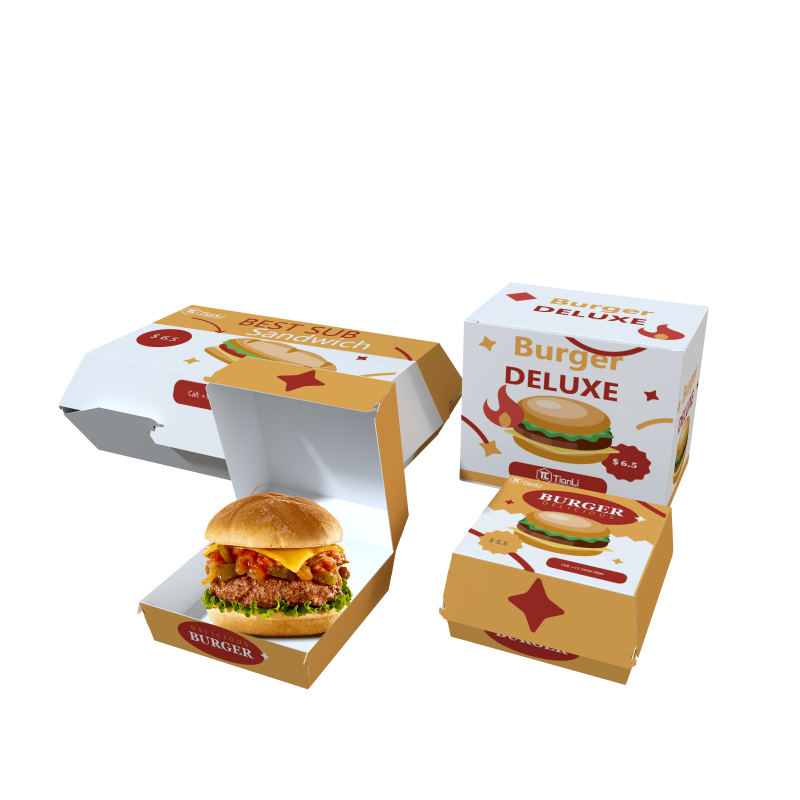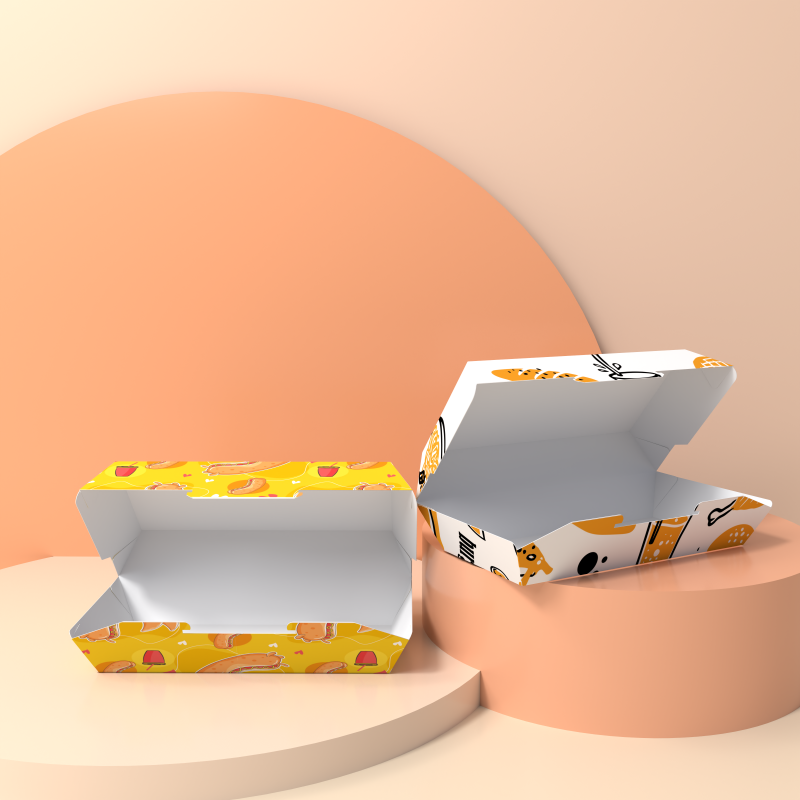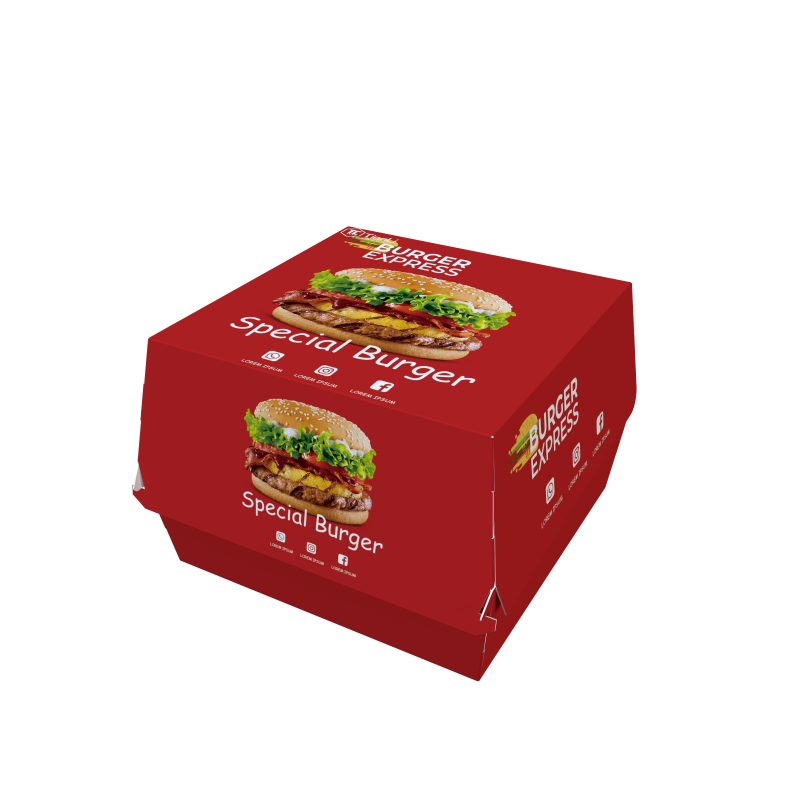The humble burger box is more than just a container; it's the final presentation of your culinary creation, a crucial part of the customer's experience, and a key factor in maintaining food quality during transport. Choosing the wrong size can lead to smashed, soggy burgers and disappointed customers.
Selecting the perfect burger box size is a science that balances burger dimensions, presentation, and practicality. This complete guide will walk you through everything you need to know to make the right choice.
Before we dive into measurements, it's important to understand the stakes:
Food Integrity: A box that's too small will crush the burger, compressing the bun and squeezing out toppings. A box that's too large allows the burger to slide around, becoming disassembled and messy.
Presentation: The first bite is with the eye. A well-fitted box presents your burger as a premium product. A sloppy fit looks unprofessional.
Heat and Moisture Control: The right amount of space helps manage condensation, preventing the bun from becoming soggy too quickly.
Cost Efficiency: Oversized boxes waste material, increasing your packaging costs unnecessarily. Undersized boxes can lead to food waste and customer complaints.
This is the total height of your assembled burger, including the top bun. This is the measurement that will determine the depth of the box you need.
How to measure: Assemble a finished burger with all standard toppings and condiments. Measure from the bottom of the bottom bun to the highest point of the top bun. Don’t press down! Add a 1/4 to 1/2 inch (6-12 mm) of clearance to prevent the lid from touching the bun.
This determines the length and width of the box. Your burger should fit comfortably within the base without too much empty space around the edges.
A good rule of thumb is that the box should be about 1-1.5 inches (2.5-4 cm) larger in diameter than the burger itself. This provides a small "buffer" zone for toppings without being excessively wasteful.
The structure of your burger dictates the box style.
Standard Single Patty: A classic clamshell box is usually sufficient.
Tall/Gourmet Burgers: Featuring multiple patties, high-profile toppings like onion rings, or a large brioche bun, these require a high-walled or extra-deep clamshell box.
Sliders: Smaller, square or rectangular boxes are ideal. They often allow for multiple sliders to be packaged together in one container.
"Smashed" or Flat Burgers: These are thinner but often wider. A standard-height but wider-diameter box may be best.
Clamshell Boxes: The most popular choice. They offer great protection and are easy to open and close. Choose between standard, high, and extra-high depths.
Wrap & Paper: Often used for dine-in, this requires less space but offers less protection for delivery. The box size is less of a concern here.
Cardboard Tray with a Lid: Common in fast-food chains. They are sturdy and stackable.


Will the fries be in the same box? This is a major decision.
Integrated Fry Compartment: Many boxes have a dedicated section for fries. This is a space-saver but can lead to fries steaming and becoming soggy if the burger's heat and moisture aren't managed.
Separate Containers: The best way to preserve fry crispiness. If you choose this, your burger box only needs to fit the burger.


Use this chart as a starting point. Always measure your specific product first.
| Burger Type | Approx. Burger Height | Recommended Box Depth (Height) | Recommended Box Style |
|---|---|---|---|
| Slider / Mini Burger | 1.5 - 2 in (4-5 cm) | 2 - 2.5 in (5-6 cm) | Small Square Clamshell |
| Standard Single Patty | 3 - 3.5 in (7-9 cm) | 3.5 - 4 in (9-10 cm) | Standard Clamshell |
| Gourmet / Large Single | 4 - 4.5 in (10-11 cm) | 4.5 - 5 in (11-13 cm) | High-Wall Clamshell |
| Double Patty / Stack | 5 - 6 in (13-15 cm) | 6 - 6.5 in (15-17 cm) | Extra-Deep Clamshell |
| Burger with Integrated Fries | Varies | Varies | Clamshell with Fry Vents |
Order Samples: Never bulk-order boxes based on online specs alone. Always request physical samples from your supplier and test them with your actual burgers.
Test the Journey: Package a burger, put it in a delivery bag, and simulate a short drive. Open it up to see how it held up. This is the ultimate test.
Consider Ventilation: Small vent holes or perforations can help release steam, reducing sogginess. This is especially useful for boxes containing fries.
Branding Opportunity: The box is a mobile billboard. Ensure your logo and design are visible and that the box's color (typically white or kraft brown) aligns with your brand identity.
Material Matters: Choose between cardboard, molded pulp, or plastic. Cardboard is versatile and great for branding, molded pulp is eco-friendly and excellent at absorbing grease and moisture, while clear plastic is premium for showing off the product.